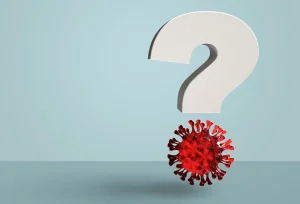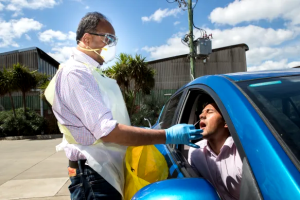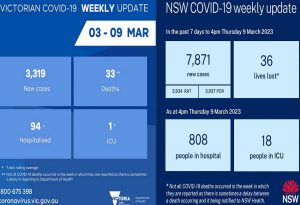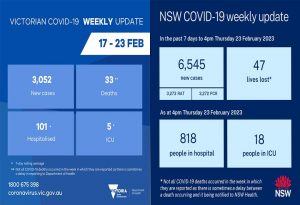Source: ABCnews
An analysis of publicly available data raises more questions about the way COVID-19 vaccines have been distributed in Australia since the rollout started to ramp up in the middle of the year.
NSW has been in the grip of the worst outbreak the nation has seen in 2021 and vaccines have been variously “brought forward” or “reallocated” to rush them to the troubled hotspots.
But the extent to which vaccine deliveries have been concentrated on NSW — at the cost of other states — may come as a surprise.
Back in late June, as Sydney’s current outbreak was just taking off, NSW was receiving 32 per cent of the national Pfizer vaccine allocation through primary care — mostly GPs.
That is roughly in line with NSW’s proportion of the national population.
But by last month its allocation had jumped to 45 per cent.
Some of that was thanks to extra vaccines, such as those in the delivery from Poland, which mostly went to NSW.
But that is not the whole story and these figures illustrate the extent to which the NSW doses have come at the expense of other states.LIVE UPDATES: Read our blog for the latest news on the COVID-19 pandemic
Consider Victoria, Queensland and Western Australia, which have all seen their allocation fall well below their share of the national population.
It is in the federal government-run distribution of Pfizer vaccines through the GP network — and now other primary care providers such as pharmacies — where there have been huge shifts in supply in favour of NSW.
With the increasing focus on vaccinating younger people, Pfizer supplies have become even more crucial.
NSW administered 904,184 jabs in just two weeks in August — more than double the number in the next biggest state, Victoria.
The other states have repeatedly said for some time that they could not get sufficient Pfizer vaccine supplies.
The real-world impact of the shifting of Pfizer vaccines to NSW, particularly given the much faster speed with which people can be double vaccinated, is significant.
Based on these numbers, for example, it appears Victoria may have missed out on up to 343,000 Pfizer jabs between June and September, Queensland 100,000 jabs and Western Australia 114,000 jabs.
But more troubling is the apparent extra weighting of future Pfizer shot allocations to NSW for the remainder of the year.
The Federal Department of Health “Horizon Allocation” document, updated in late July, forecasts the distribution of various vaccines until the end of December.
It shows Victoria, Queensland and Western Australia continuing to receive much less than their population’s share of vaccines.
For example, Victoria would normally get about 82 per cent of NSW’s allocation.
But it is forecast to get between just 66 per cent and 69 per cent.
The two states most adversely affected by the shift in Pfizer shots to NSW are Victoria and Queensland.
In a statement to 7.30, Victorian Health Minister Martin Foley said it was “disappointing that the Commonwealth appears to be pursuing a national plan to vaccinate NSW at the expense of all other Australians”.
7.30 understands Queensland Health raised its concerns about the allocations with the federal government in mid-August.
In a statement to 7.30, a spokesperson for Operation COVID Shield, the national body responsible for the rollout headed by Lieutenant General John Frewen, said part of the response to the NSW outbreak in July and August had involved rapidly bringing 260 GP practices in NSW online.
To balance this, the spokesperson said extra doses would be provided to other states, starting with Victoria, from September 13.
A new forecast of how vaccines will also be shared out will be released shortly.
While Lieutenant General Frewen has moved to try to increase the transparency of data about the vaccine rollout, there is still a lot of information we do not know.
The Northern Territory government, for example, will not release the vaccination rates for remote communities, preferring to bundle the numbers into broader regions that incorporate whiter, larger and better-vaccinated towns.
But the revelations of just how the rollout has been shared around the country may up the pressure on all governments to explain what they have been doing with their vaccines.












